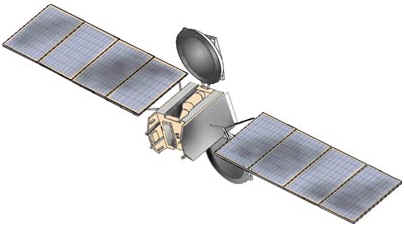 设为首页
设为首页
 加入收藏
加入收藏
China Way to outer Space
China sent its first
man-mad satellite, Dongfanghong-1,into
space in 1970, becoming the fifth country
that had this capacity(能力)., following
the Soviet Union, the United States, France
and Japan.
With the successful launching(发射), China
started its exploration into space, and
has become one of the major space powers(大国)
in the world after 30 years of development.
At 6:30a.m. on November 20, 1999, a spacecraft(宇宙飞船)
named Shenzhou blasted off into space
from the Jiuquan Satellite Launching Centre(酒泉卫星发射中心)
in northwest China’s Gansu Province, aboard(搭载)
a new type of Long March carrier rocket(运载火箭).
After a 21-hour test mission(任务), Shenzhou,
China’s first spacecraft, successfully
landed in the Inner Mongolia Autonomous
Region(内蒙).
Beginning with the Dongfanghong-1 satellite
and ending with the Shenzhou spacecraft,
China’s space industry has undergone(经历)
30 years of exploration. Today, the nation
has set up a regular spacecraft development
system, and its space undertakings事业)
have entered a new era(时代) of rapid development.
China’s space development has witnessed(见证)
great changes over the past 30 years,
Satellite models have been diversified(多样化),
and development technology has expanded(扩大)
in possibilities and is more open, Today
satellites are used not only for scientific
research, but also for serving public
needs.
Chinese scientists have so far developed
more than 40 satellites and spacecrafts
Although Chinese astronauts did not go
into space with Shenzhou, they spared
no effort in their training and are ready
to go at any time. At present, analysis(分析)
of the results of the Shezhou spacecraft’s
test mission is still under way. China
will make further improvements of various
systems in the spacecraft and will launch
several additional(另外的) unmanned flights
(飞行)before sending astronauts into space
with them.
What is a satellite anyway?
A satellite is any object
that orbits or revolves around another
object. For example, the Moon is a satellite
of Earth, and Earth is a satellite of
the Sun.
Orbiting Machines
In this exhibit we'll look at the man-made
satellites that orbit Earth and the Sun
-- highly specialized tools that do thousands
of tasks every day. Each of these satellites
has many parts, but two parts common to
all satellites are called the payload
and the bus.

Satellite Elements
The payload is all the equipment a satellite
needs to do its job. This can include
antennas, cameras, radar, and electronics.
The payload is different for every satellite.
For example, the payload for a weather
satellite includes cameras to take pictures
of cloud formations, while the payload
for a communications satellite includes
large antennas to transmit TV or telephone
signals to Earth. The bus is the part
of the satellite that carries the payload
and all its equipment into space. It holds
all the satellite's parts together and
provides electrical power, computers,
and propulsion to the spacecraft. The
bus also contains equipment that allows
the satellite to communicate with Earth.
